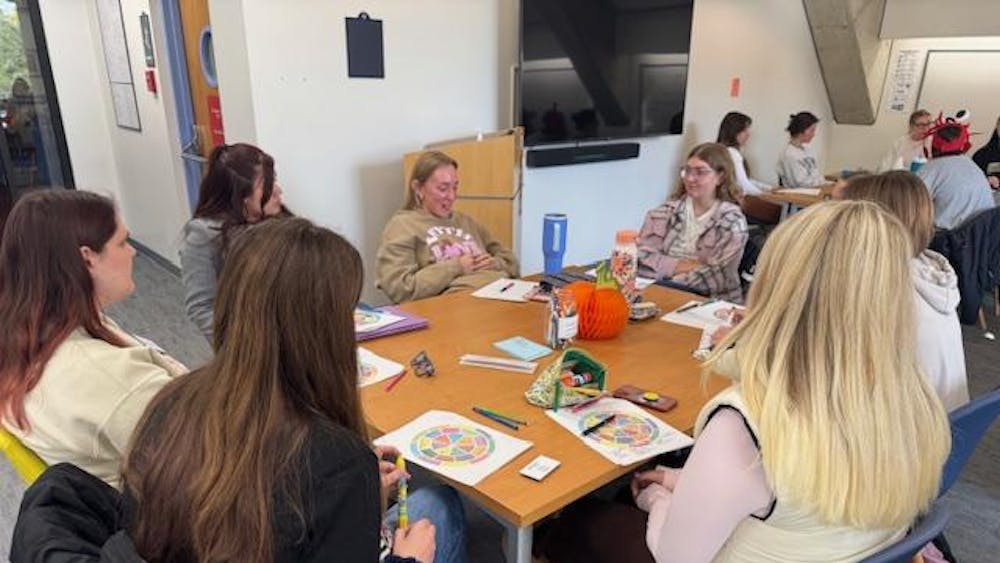Communication studies professors Marne Austin and Terri Russ are redefining learning through their implementation of mindfulness in their classroom setting.
Professor Austin said she defined mindfulness as a commitment to always being present in the current moment.
“Mindfulness is a practice of presence and of radical presence with each other,” she said. “It means that we must strive to be present to ourselves in our own lives. This requires purposefully slowing down to be here entirely in each moment.”
After noticing the negative effects that many cultural trends have had on learning, Austin said she chose to implement mindfulness in her classes.
“So often in our culture and society we pride ourselves on business and like to pretend that we are very good at multitasking,” she said. “Studies are showing more and more is that multitasking can’t actually happen effectively. If we are doing multiple things at once it means it’s only getting a fraction of our attention. It’s no wonder that we are losing our connections with each other and the things that we’re doing if we’re only partly present.”
Austin uses two main mindfulness practices in her classes: breathing exercises and compassionate listening. These practices allow students to slow down and open themselves up to endless educational possibilities, she said.
“In class we start by pausing,” Austin said. “The idea is that there’s nowhere else we’d rather be, nothing else we need to do, except be here and we can trust that we have this inherent brilliance and that we all matter and have something to offer.”
Austin said she has noticed a great change in the classroom as a result of these small enhancements.
“Students have more courage and feel safe to ask questions,” she said. “The energy shifted. When we were able to divorce our being from the things we said and the questions we asked, then anything could be said and learned.”
Russ said she begins classes with what she calls a “mindfulness moment,” often employing use of freewriting.
“Just write for the next 10 minutes,” she tells students. “Don’t stop writing. If you don’t know what to write, [then] write ‘I don’t know what to write.’”
Professors tend to feel crunched for time to teach everything they need to during class time, so the idea of giving up a few minutes for a mindfulness exercise can seem risky, Russ said. However, Russ said she finds this to be a worthwhile use of class time.
“It allows not only for more focused discussion, but also deeper discussion,” she said. “So the cost-benefit analysis of that is that I end up gaining some class time by taking away some class time.”
Implementing mindfulness into their daily lives helps students focus outside the classroom as well, Russ said, so long as it doesn’t become another item on an increasingly long to-do list. She said she has even given a keynote address titled “I’m Too Busy to Be Mindful.”
“We’re very task-oriented as a society,” she said. “We like our checklists. We like to know exactly what we’re going to do [and] how to get things done. Mindfulness, then, becomes another task. By making it another task, we think ‘I’m too busy to be mindful.’”
Mindfulness is said to improve focus and productivity, but Austin and Russ agree that it goes beyond this.
Mindfulness‘ positive effects go beyond simply improving one’s focus and productivity, Austin said.
“When you start practicing mindfulness, you do it personally because it’s this self-care, but it’s through this that you transform the world around you,” Austin said.
Read More
Trending









